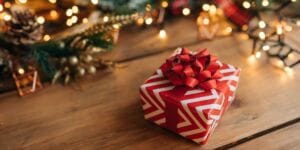The future of Phoenix needs to be more sustainable and denser, say the architects Studio Ma, who celebrate the completion of their much-anticipated The Hollyhock residential complex this summer.
The modern, comfortable and sophisticated new collection of 11 townhouses connected by walkable, neighborly courtyards is a speculative infill multifamily housing development in the architecturally noteworthy Arcadia neighborhood of Phoenix. The one- and two-story living units are organized around private gardens, lush walkways, and a community commons, yet occupy a compact built footprint of just under 13,000 square feet and are constructed with an economical approach that ensures the homes will be attainable for many area residents.
Most important, The Hollyhock debuts a number of the super-green, sustainable building techniques that have helped elevate Studio Ma to national prominence and the verge of international renown (see below). The project also embodies one of Studio Ma’s core values, “leadership through partnership,” by drawing on close collaboration with general contractor The Construction Zone on behalf of the developer, Hollyhock LLC, a brother-and-sister-owned small business based in Phoenix. “Together, the team pledged to create a unique rental offering of exceptionally high value, incorporating market-leading aesthetics, functionality and performance for this long-term family investment,” says architect Christopher Alt, R.A., a founding principal of Studio Ma. “Central to the concept are sophisticated architectural details and quality rarely seen in apartments in any market.”
“My brother and I were raised in Arizona, love this neighborhood, and wanted to create a sense of community with our property on Hollyhock Street,” says Marianne Cracchiolo-Mago, partner, Hollyhock Apartments LLC. “The elevated urban design, character and environment achieved by Studio Ma creates a small ‘village’ aesthetic while masterfully prioritizing privacy, views, and open floorplans. We could not be happier, the results are stunning, and the design maximized the property’s potential.”
In terms of sustainability, the new residential buildings are designed for exceptional insulation, energy efficiency and low water use, for example, while taking advantage of the region’s sunlight and prevailing breezes to boost comfort and reduce operating costs. The material palette includes high-performance low-emissivity glass, insulated faux stucco, galvanized metal, natural woods and cooling, exposed concrete floors. The long-lifespan palette is economical and environmentally sound, and the natural woods and metals reduce carbon emissions associated with typical construction.
According to Studio Ma’s Alt, the landscaping is predominantly xeriscape, requiring little irrigation. A new parking shade canopy is designed for the future addition of solar photovoltaic panels, with charging stations for electric vehicles. The Hollyhock also adopts principles of the Living Building Challenge standard, such as valuable quality-of-life features including water filtration to remove calcium and provide better drinking water for residents and protect plumbing fixtures.
These approaches — and The Hollyhock’s neighborhood scale — are also seen in other area architecture by Studio Ma, including commercial office headquarters such as The Brokery, TMK Law, and Xero Studio. The Hollyhock’s location in the stylish Arcadia district, in the foothills of Camelback Mountain, demands a prestigious architectural signature. Its esteem and lineage draw from landmark modern homes by Frank Lloyd Wright and Al Beadle, among other notable architects.
“We are very gratified to see the embrace of the development team’s strong vision for Phoenix that combines modern, elegant surroundings and a sense of close-knit community with an effective investment in environmentally sensitive, resilient architecture,” says architect Christiana Moss, FAIA. “We’re finding more interest in these approaches for both low-rise and high-rise mixed-use residential complexes that deliver attainable housing prices and lower-cost operations.”
Known for innovative and award-winning housing concepts such as PRD 845, The George, and the upcoming Holly Street Townhomes, Studio Ma (studioma.com) has been named Arizona’s AIA Firm of the Year, and its headquarters, Xero Studio, has been hailed by Fast Company as “a model of regenerative architecture, which uses existing natural resources to create more life.”
Other award-winning recent residential projects include successful infill housing work as well as notable residential halls at Princeton University and Arizona State University. The firm is especially adept at creative infill buildings with mixed-use and residential solutions that are successful from both an economic and a citymaking standpoint. This is an important approach as many U.S. cities have increasing consumer and developer interest in large-scale projects while leaving empty lots available for lower-density, infill solutions.



